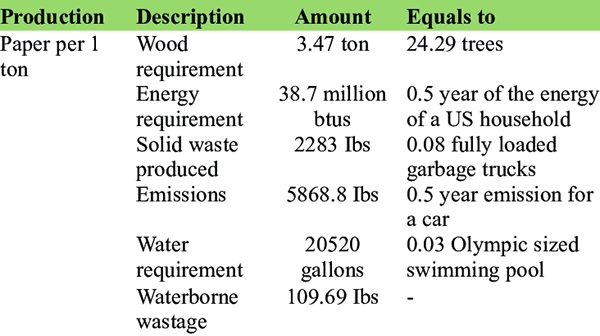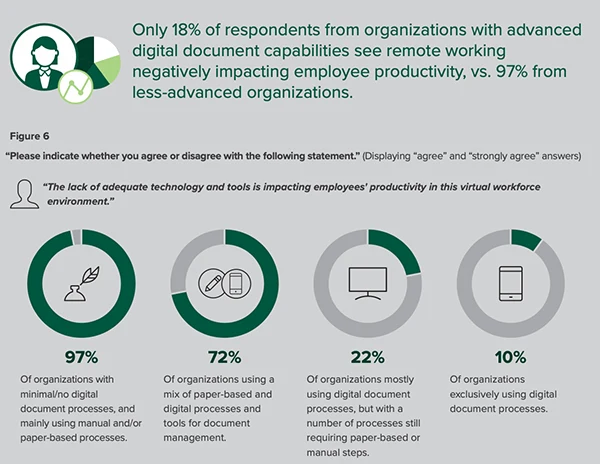Whether you believe it or not, using paper for company documentation significantly impacts the total expenditure by the year’s end. According to data, paper-related costs can account for up to 3% of a company’s revenue, and digitizing documents can reduce these costs by as much as 30% to 40%.
Along with that, paper waste also causes huge environmental damage. One way to address these challenges is through document digitization. This process involves converting paper documents into digital formats, allowing organizations to streamline their operations, improve efficiency, and enhance productivity.
In this article, we will explore how document digitization can transform your business operations, focusing on its benefits, implementation strategies, and impact on overall business performance. Also, learn about ttps://docs.google.com/document/pii_deleted by reading this article.
The Need for Document Digitization
Businesses generate vast amounts of paperwork every day. From invoices and contracts to reports and memos, managing physical documents can be time-consuming and inefficient. Traditional paper-based processes often lead to challenges such as:
- Storage Issues: Storing physical documents requires significant space, which can be costly and cumbersome.
- Accessibility Problems: Locating specific documents can be difficult, leading to wasted time and decreased productivity.
- Security Risks: Physical documents are vulnerable to loss, damage, or unauthorized access.
Document digitization addresses these issues by converting paper into electronic files. This transformation makes it easier to store, retrieve, and share information while enhancing security measures.
Benefits of Document Digitization
Coming to the main point behind the write-up, the following are some benefits that document digitization offers:
1. Improved Efficiency
One of the primary advantages is improved efficiency. Digital documents can be easily accessed and shared among team members, enabling quicker decision-making. Employees no longer need to spend hours searching for paper files; instead, they can find the information they need in seconds using search functions.
2. Cost Savings

Digitizing documents can lead to significant cost savings. Companies can reduce expenses related to paper, ink, and physical storage space. Additionally, with increased efficiency, employees can focus on more value-added tasks rather than administrative work. This shift can ultimately lead to higher profitability.
3. Enhanced Security
For a clearer understanding, expert Detroit IT services ensure digital documents are secured by using or deploying various measures, such as encryption and access controls. This protects the business’s sensitive information from unauthorized access and reduces the risk of data breaches. In contrast, paper documents can be easily lost or damaged, leading to potential data loss and legal issues.
4. Better Collaboration
It facilitates better collaboration among team members. With cloud storage solutions, employees can access documents from anywhere, whether they are in the office or working remotely. This flexibility fosters teamwork and allows for real-time collaboration on projects.
5. Environmental Impact

By reducing the need for paper, document digitization also contributes to environmental sustainability. Businesses can minimize their carbon footprint and promote eco-friendly practices by going digital. This aspect can enhance a company’s reputation and attract environmentally-conscious customers.
6. Compliance and Risk Management
Many industries have strict regulations regarding document management and data retention. Digitizing documents can help organizations maintain compliance by providing a more organized and secure system for managing records. Additionally, having digital records simplifies audits and reduces the risk of non-compliance.
7. Increased Productivity
With quicker access to information, employees can work more productively. They can focus on their core responsibilities instead of getting bogged down by administrative tasks. This increase in productivity can have a ripple effect throughout the organization, leading to better performance and customer satisfaction.
Implementing Document Digitization
While the benefits of document digitization are clear, implementing it in your business requires careful planning. Here are some key steps to consider:
1. Assess Your Current Document Management Process
Before you begin digitizing documents, it’s essential to assess your current document management process. Identify the types of documents you use, their volume, and how they are currently stored and accessed. This analysis will help you determine the scope of your digitization project.
2. Choose the Right Technology
Selecting the appropriate technology is critical for a successful digitization process. Consider factors such as:
- Scanning Equipment: Invest in high-quality scanners that can handle your document volume efficiently.
- Document Management Software: Choose software that allows you to organize, store, and retrieve digital files easily. Look for features like search functionality, version control, and access permissions.
3. Develop a Clear Strategy
Create a comprehensive plan outlining your digitization goals, timelines, and resources required. Assign roles and responsibilities to team members and establish a timeline for each phase of the project. This clear strategy will help ensure a smooth transition to digital document management.
4. Train Your Staff
Acing the process requires employee buy-in and understanding. Provide training sessions to educate your staff on the new processes, tools, and best practices. Encourage feedback and address any concerns they may have about the transition.
5. Start with a Pilot Project
Before digitizing your entire document repository, consider starting with a pilot project. Choose a specific department or type of document to digitize first. This approach allows you to identify any challenges and make necessary adjustments before scaling up the process.
6. Monitor and Evaluate Progress
Once the digitization process begins, monitor its progress closely. Gather feedback from employees and evaluate the effectiveness of the new system. Regularly review your processes and make improvements as needed.
The Impact of Document Digitization on Business Performance

The transformation brought by document digitization can significantly impact overall business performance. By enhancing efficiency, reducing costs, and improving collaboration, organizations can position themselves for long-term success. Here are a few ways that can lead to improved business outcomes:
1. Enhanced Customer Experience
With quicker access to information, employees can respond to customer inquiries more promptly. This increased responsiveness leads to improved customer satisfaction and loyalty, as clients appreciate efficient service.
2. Better Decision-Making
Having access to accurate and timely information enables better decision-making. Digital documents allow businesses to analyze data and trends more effectively, leading to informed strategic choices.
3. Increased Agility
In a rapidly changing business landscape, agility is crucial. Document digitization enables companies to adapt quickly to new challenges and opportunities. With digital files readily accessible, businesses can respond to market changes and customer demands more effectively.
4. Scalability
As businesses grow, so do their document management needs. Digitization provides a scalable solution that can accommodate increased document volumes without requiring extensive physical storage space. This scalability allows organizations to expand without the limitations of traditional paper-based systems.
5. Competitive Advantage
Companies that embrace the process often gain a competitive advantage over their peers. By streamlining operations and improving efficiency, these organizations can deliver better products and services, ultimately attracting more customers.
Challenges of Document Digitization
While document digitization offers numerous benefits, it is not without challenges. Businesses may encounter issues such as:
1. Resistance to Change
Some employees may be resistant to adopting new technologies or processes. To overcome this challenge, it’s essential to communicate the benefits of digitization clearly and involve staff in the process.
2. Data Quality and Accuracy
Ensuring the accuracy of digitized documents is crucial. Poor-quality scans or incorrect data entry can lead to errors that may have significant consequences. Implementing quality control measures during the digitization process is vital.
Digitized workflows lead to 70% higher employee satisfaction, as employees spend less time on repetitive manual tasks and more on higher-value work.
3. Integration with Existing Systems
Integrating new document management solutions with existing systems can be complex. Businesses must ensure that their chosen technology can work seamlessly with current software and processes to avoid disruptions.
4. Initial Investment Costs
While document digitization can lead to long-term savings, the initial investment in technology and training can be significant. Businesses should carefully evaluate their budgets and consider the potential return on investment before proceeding.
Conclusion
Document digitization has the potential to transform business operations by enhancing efficiency, reducing costs, and improving collaboration. As organizations continue to navigate a rapidly changing landscape, embracing digital solutions will be essential for maintaining competitiveness. By implementing a thoughtful and strategic approach to document digitization, businesses can unlock new opportunities for growth and success.
In conclusion, the journey may present challenges, but the rewards far outweigh the risks. As technology continues to advance, businesses must stay ahead of the curve by adopting digital practices that streamline their operations and empower their workforce. By embracing document digitization, companies can position themselves for a successful and sustainable future in the digital age.










